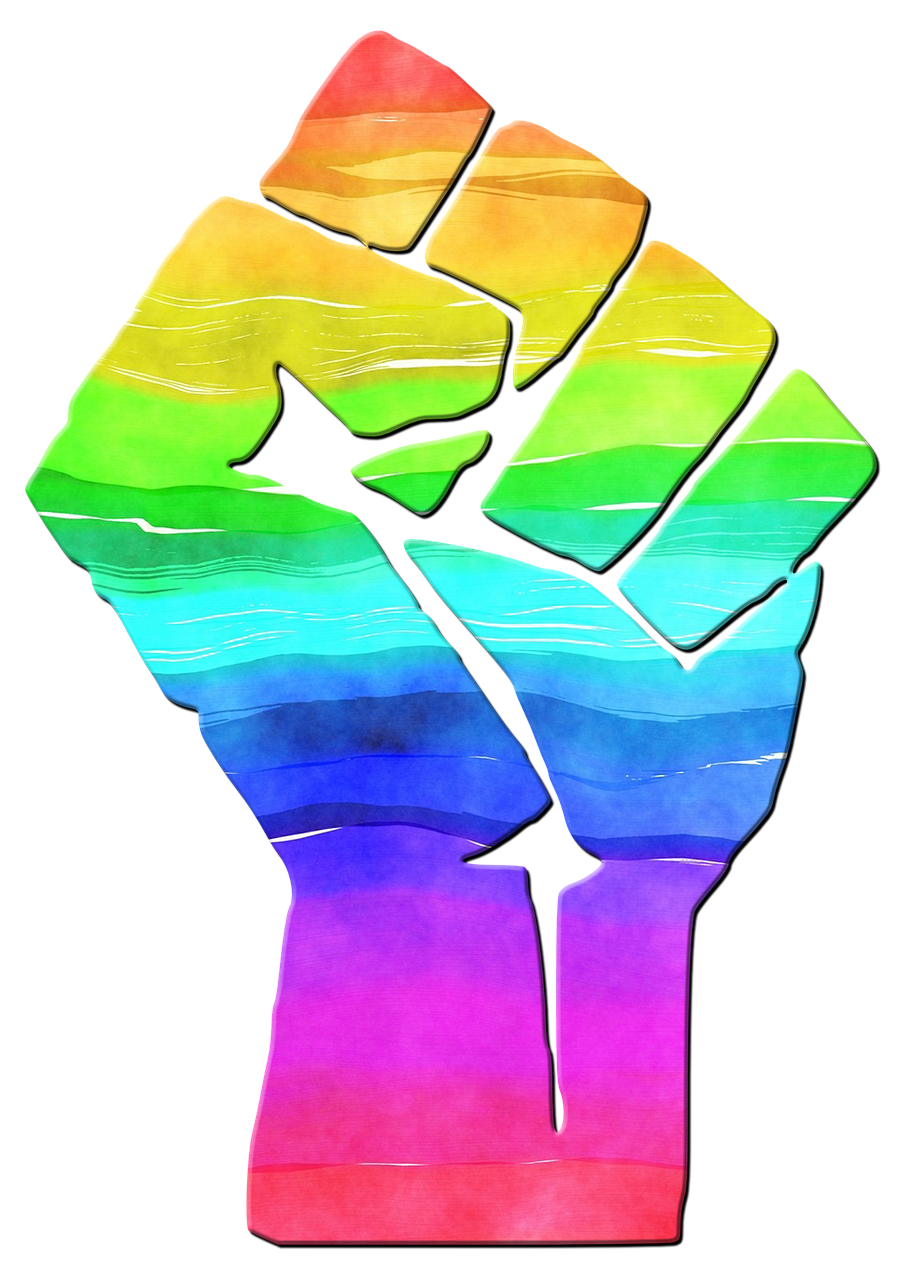Often when we think of protesting, we imagine a march or picket line with shouting and chanting and open demands for change. We image large group organising, a collaborative effort taking place during a particular occasion.
But there are many different kinds of protest, some louder than others, but all play incredibly valuable roles in helping to shape the world into a better place.
Here are five easy forms of queer protest that you can use every single day. These simple but bold techniques should help work to subvert gender norms and systems of heteronormativity and cisnormativity.
Gender Non-Conforming Expression
The actor Ezra Miller once said, ‘Queer just means no, I don’t do that. I don’t identify as a man. I don’t identify as a woman. I barely identify as a human.’ While this isn’t the same definition for everyone, there’s something important we can understand from this. Queer identity and expression often involves a refusal to take gender norms and roles for granted, and instead works to subvert these constructions in critical ways.
This can involve androgynous dressing and dressing in clothes and styles outside of your gender’s norms. Often stores have a ‘men’s’ section and a ‘women’s’ section, dividing gender expression with a neat clean line. By blurring this line and subverting expectations, you present to the world a refusal to conform to social systems that harm a lot of queer people.
Think of it like how Eddie Izzard describes it, ‘They’re not women’s clothes. They’re my clothes. I bought them.’ Take ownership of your expression and represent yourself and how you feel about yourself without letting social norms get in the way.
While this approach doesn’t work for everyone, it can certainly be a liberating, educational and freeing experience to try some gender non-conforming expression and walk down the street as a visible protest to limitations we create in an oppressive society.

Pronoun Declarations
Normalising making pronouns clear and demanding that they be respected is a really simple way of resisting cisnormativity.
Often we assume people’s pronouns, which can often lead to people being misgendered. By creating an opportunity where people are informed of each other’s pronouns, we can hopefully decrease misgendering and increase an understanding of the importance of respecting people’s pronouns.
There are many ways we can declare our pronouns. You could wear a badge with your pronouns displayed. You could include your pronouns in your social media bios. And, when you introduce yourself to new people, you could include your pronouns with your name.
By offering your pronouns, you then create space for other people to potentially feel safe to offer their own. This allows for mutual respect and a refusal to continue the common practice of making assumptions about other people’s gender and pronouns.
Fly Your Flag
If you have an LGBTQ+ flag and feel safe to hang it up, why not try hanging it somewhere where it’s publicly visible?
Flying your flag out your window, on your patio or balcony, or even on a flagpole is a really simple way of promoting LGBTQ+ visibility in your own neighbourhood. In a society that often assumes that everyone is cisgender and heterosexual, having a flag up is a reminder to everyone around that queer people exist and we aren’t ashamed of who we are.

Share Resources and News
A lot of people somehow think that queer people don’t face any queerphobia anymore, or at least that our fight is over now that we have equal marriage.
By sharing news and resources about queer experiences on your social media and in conversation, you might get the chance to educate people about issues they may not have been aware of.
One of the key ways to resist heteronormative and cisnormative belief systems is to create and spread new knowledge. By sharing ideas that might change people’s thinking, you are actually playing an important role in the fight for change.
Having difficult conversations and posting queer information can be a great way to protest for queer liberation every single day.
Take it slow though and be sure to take care of your mental health first; surrounding yourself with nothing but negative stories can get tough real fast, so share some of the joys of being queer too and takes breaks away from negative feeds when you need to.
Uplift Queer Voices
Following on from the previous point, promoting and empowering the voices of queer people is an essential form of protest.
In social hierarchies where straight and cisgender people have more privilege than queer people, actively putting queer people first and giving priority to their knowledge, wisdom and ideas, can be a really powerful way of subverting historical hierarchies and demanding space for queer perspectives.
This can take many forms, from celebrating queer people in history, to promoting queer leaders today, to purchasing queer art and content.
If you can, there’s one really important queer voice that you should uplift wherever you go: your own. If you are LGBTQ+ and feel safe to be out where you are, don’t be afraid to be bold and outspoken about your own perspective and experiences as a queer person.
Demand that the spaces you occupy respect your queer identity and ways of being. Subvert expectations and hierarchies wherever you go, and live your truth without apology.

While not all of these approaches will work for everyone, hopefully they have inspired you to find a way to subvert social systems of heteronormativity and cisnormativity in your day to day life, and find ways to feel empowered in the continued protests for queer liberation.
So remember, sometimes protesting isn’t about shouting and marching, sometimes it can be calm and casual, but every little bit helps, and you matter no matter how you protest.





